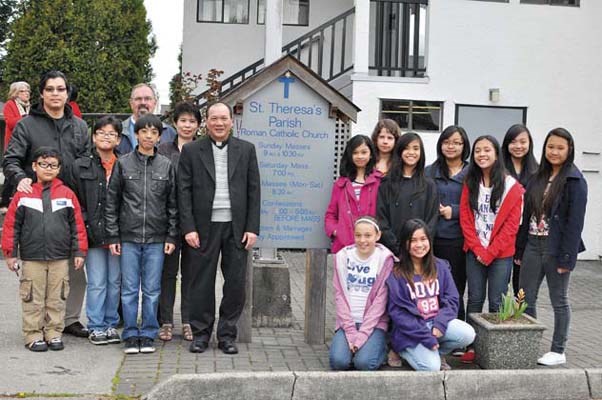Through the last few months, the NOW has featured a number of people and places in our ongoing Then & NOW series by reporter Christina Myers, with historical and current photos from around the city.
This final instalment takes a look at the changing landscape of the city - from dirt roads and forests to booming metropolis - through a closer look at a Canada Way church and a key intersection in North Burnaby.
With the towers of Metrotown, the bustle of the various town centres and the hum of SkyTrain, it's hard to imagine that less than 100 years ago, the roads were still dirt and much of the area was dense forests.
A complete gallery of all the images in the Then & NOW series is available online at www.burnabynow.com.
Have an idea for a history story? Send it to [email protected].
----------------------------
It's difficult to imagine now, but it wasn't too many years ago that Burnaby was still wild forests with streams and creeks running through it, a handful of dirt roads connecting the "downtowns" of Vancouver and New Westminster, and the beginnings of small neighbourhoods dotted here and there.
By the 1920s, Burnaby was literally booming, thanks to the post-First World War real estate rush.
As more and more people settled here - 20,000 of them by 1924 - infrastructure grew up around them to support the growing community.
Early businesses, like Beaton's Garage on Hastings (pictured below) opened their doors to customers.
Schools continued to be built throughout the fledgling school district. And churches sprang up to serve the spiritual needs of Burnaby residents.
In 1929, land began being cleared for a new Roman Catholic Church on Canada Way, then known as Douglas Road (pictured above left).
Trees had to be cleared and stumps removed before building could begin. Located on the southeast corner of Laurel Street and Canada Way, the first church was a short-lived structure: it burned down the night before it was supposed to be blessed.
Insurance papers had been drawn up a few hours before the fire but hadn't yet been signed - but the insurance company came through on the claim nonetheless.
A new but smaller building was put up with the insurance money and was used by St. Theresa's parishioners until 1974, when it was torn down.
A new church was then built across Canada Way. That building is still in use today and welcomes about 400 parishioners each week, with six morning mass services, one evening service, one Saturday mass and three Sunday mass services. Once a month, a mass is held in Mandarin.



